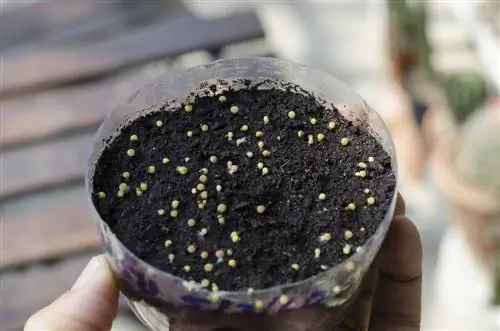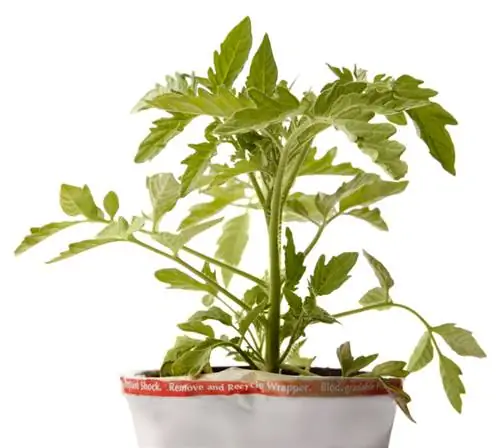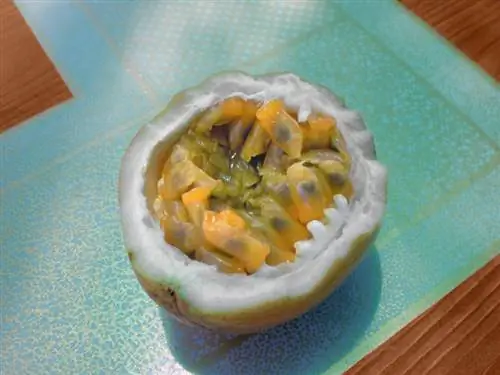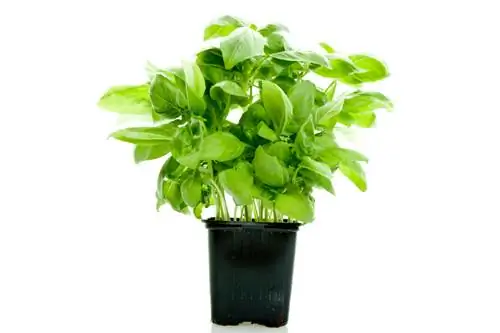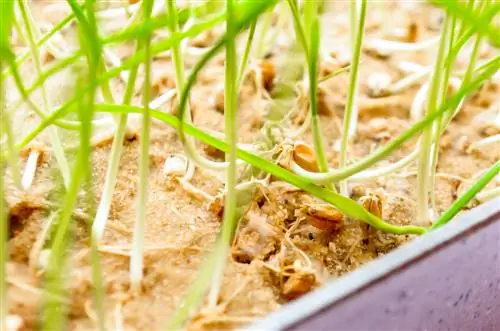- Author admin [email protected].
- Public 2024-01-02 03:03.
- Last modified 2025-01-23 11:21.
Cat grass is not only a real treat for your cat, but also provides your pet with numerous he althy nutrients. But you also benefit from the properties of the plant. Due to its rapid growth, the grass is ideal for growing your own. So you not only save costs, but you always have a few straws in stock, at least if you follow the tips on this page.
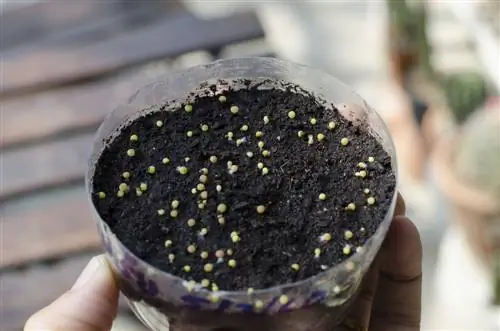
How can you grow cat grass yourself?
To grow cat grass yourself, you need a seed pot, nutrient-poor garden soil, seeds (preferably sweet grass) and water. Soak the seeds, sow them 2-3 cm deep in the substrate and water regularly. Harvest the grass before it becomes woody and sow as needed portions at 2-3 week intervals.
Growing cat grass from seeds
Cat grass is best kept in a potty in the apartment. Since there are constant conditions in the house, it is possible to sow the grass at any time. However, it is important that you store your plant in a very bright location. However, a window sill is only suitable to a limited extent, as direct sunlight burns the stalks.
Which seeds are worthwhile?
Cat grass is available in two varieties:
- as sour grass
- as sweet grass
For your own cultivation, we recommend using sweet grasses. Domestic grain varieties such as oats or wheat grow very quickly, so you don't have to wait long after sowing before you can feed the stalks. In addition, these types of cat grass do not become woody so quickly. There are various options for obtaining it:
- the Internet
- the specialist trade
After purchasing them once, you can take the seeds from the existing plant and use them for re-sowing.
Instructions
- Fill a seed pot (€10.00 on Amazon) with conventional garden soil (substrate must be low in nutrients).
- Soak the seeds in water for one to two hours to shorten germination time.
- Then press the seeds about two to three centimeters deep into the substrate.
- Water the soil, avoid waterlogging.
- If the humidity is high, stretch a transparent film over the growing pot.
Sowing small portions
Cat grass grows incredibly quickly, but also becomes woody after a short time. Then you should no longer feed the stalks as your cat could injure itself on the sharp shoots. Before you cut the plant back or dispose of it completely, sow portions that are better suited to your needs. A gap of two to three weeks between sowings is recommended.

